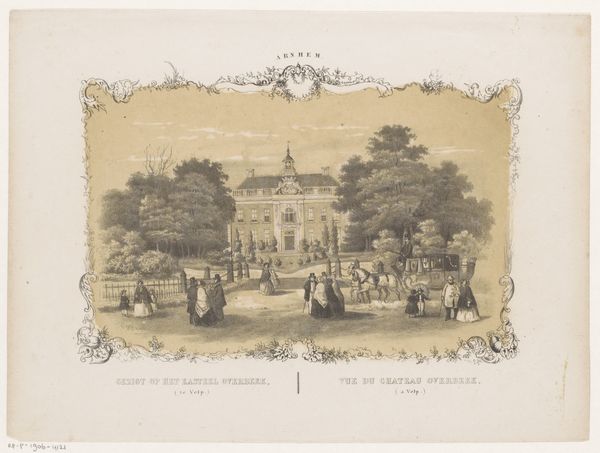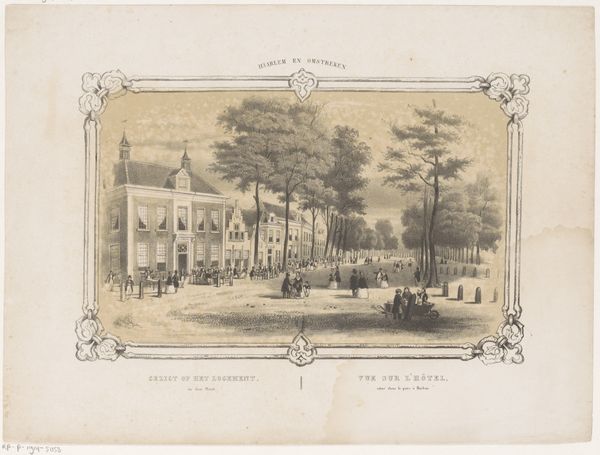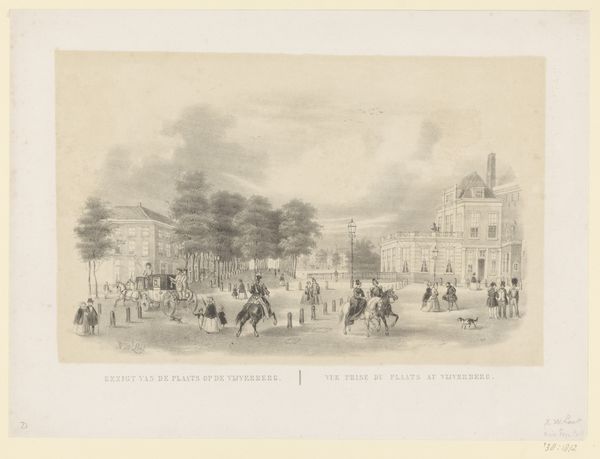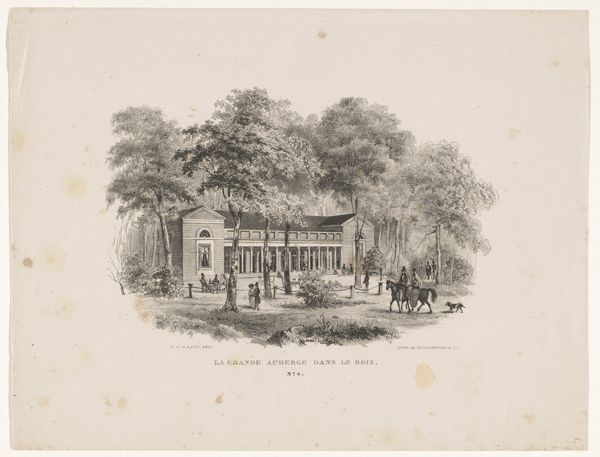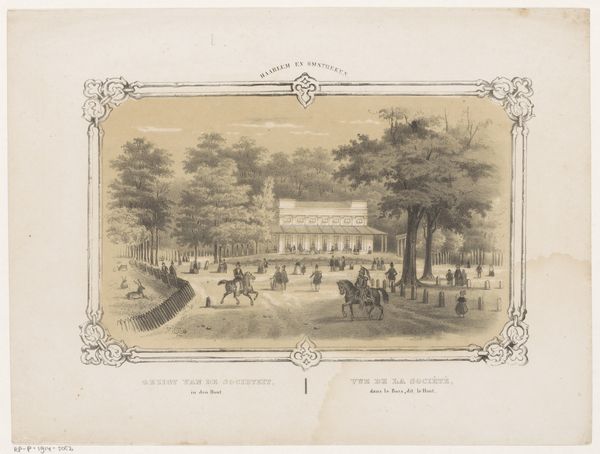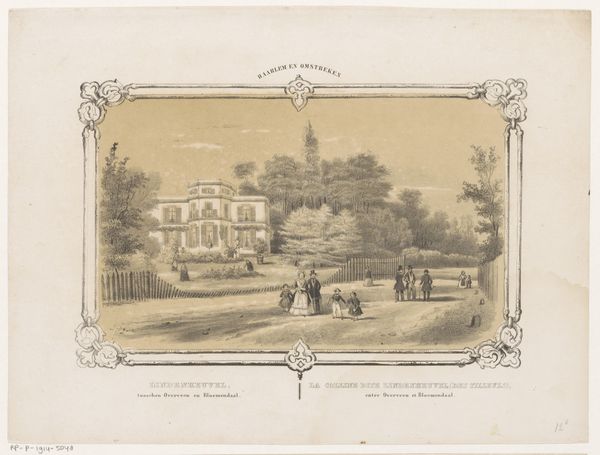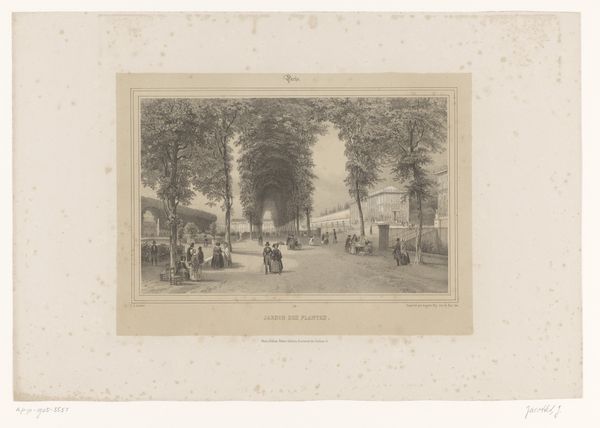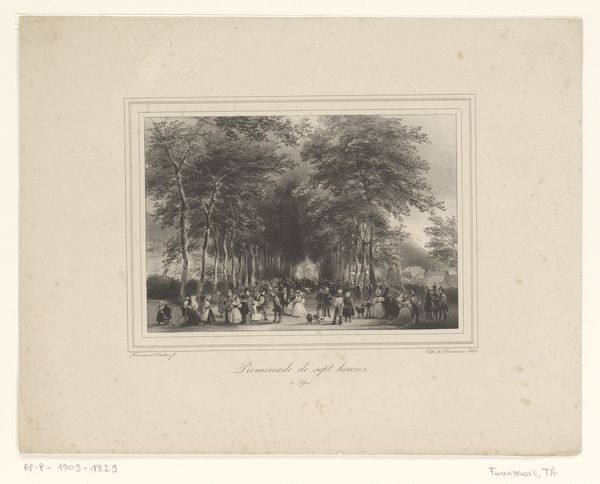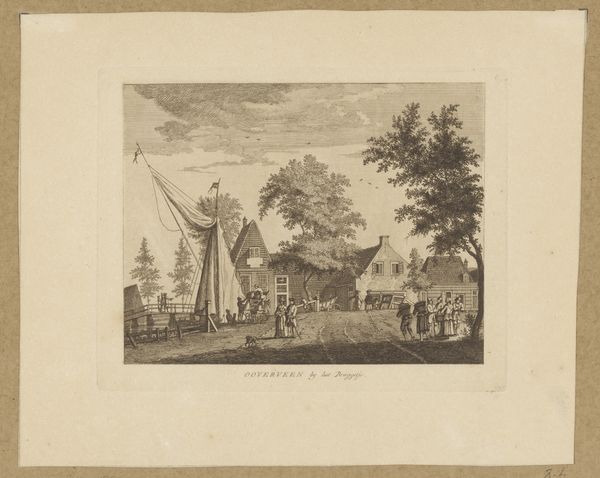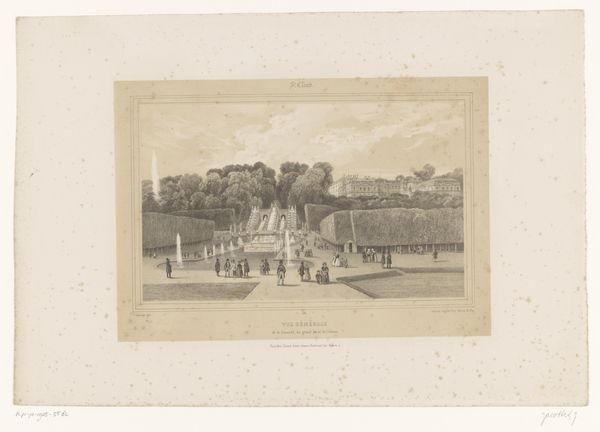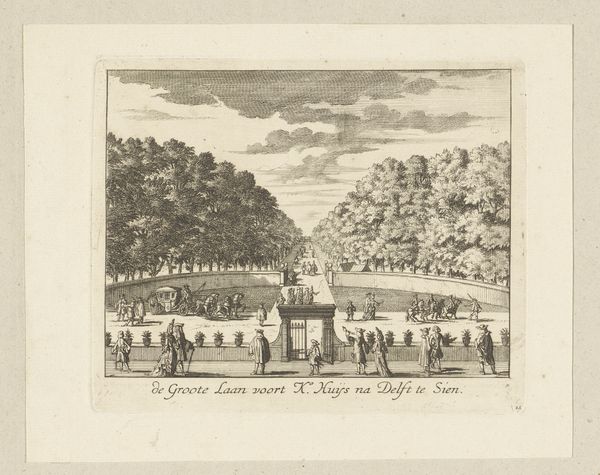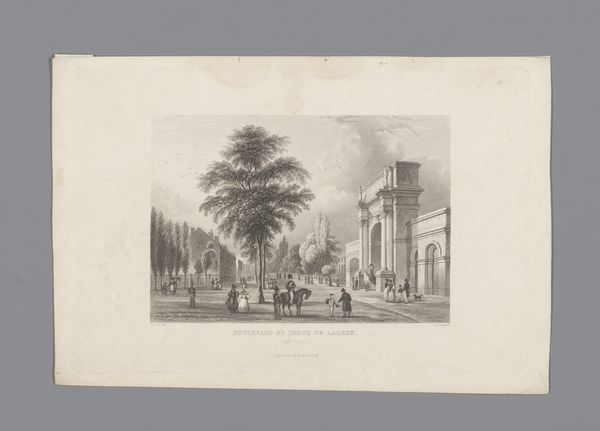
Gezicht op het Plein in Den Haag met standbeeld van Willem I 1827 - 1873
0:00
0:00
drawing, print, pencil
#
drawing
#
neoclacissism
#
statue
#
aged paper
#
light pencil work
#
quirky sketch
# print
#
pencil sketch
#
landscape
#
personal sketchbook
#
pencil
#
ink colored
#
sketchbook drawing
#
cityscape
#
watercolour illustration
#
sketchbook art
#
watercolor
Dimensions: height 255 mm, width 330 mm
Copyright: Rijks Museum: Open Domain
Curator: Here we have Hendrik Wilhelmus Last's "Gezicht op het Plein in Den Haag met standbeeld van Willem I," dating roughly between 1827 and 1873. It’s currently held at the Rijksmuseum. Editor: It feels so… contained. A gentle scene. The light pencil work gives it an ethereal quality, like a memory fading at the edges. Curator: I agree. Let's consider Last's process. The aged paper itself tells a story. Think about the labour involved in creating and distributing these prints. It speaks to a growing market for imagery of national identity and civic pride. The use of pencil and perhaps some light ink washes also points to a shift towards accessible art-making practices, maybe even intended for a sketchbook. Editor: I'm immediately drawn to the statue of Willem I, the imposing figure overlooking the scene. Statues like these were powerful symbols of national unity. They reinforced a cultural memory of leadership and stability during a time of shifting political landscapes. It stands sentinel amidst daily life. Curator: Precisely! The statue isn't merely a representation; it's a product. How was the bronze sourced? Who were the artisans who cast it? Last's rendering indirectly asks these questions, because without the raw materials and labour, there is no iconic sculpture. This intersects with social context, considering how class structures enabled such projects. Editor: And that contrast is fascinating. Willem, literally set in stone, juxtaposed with the everyday folks in the square – their attire, the way they carry themselves. Last is showing us how those grand symbols intersect and integrate into the common person’s life. Each element in the cityscape carries an emotional and political resonance. Curator: I appreciate your emphasis on emotional context! The choice of rendering, combined with distribution networks to make Last's landscape widely accessible and perhaps influence growing nationalist ideals. This simple work invites critical consideration. Editor: Exactly. Even this small-scale pencil sketch triggers so many layers. It proves images have a staying power.
Comments
No comments
Be the first to comment and join the conversation on the ultimate creative platform.
